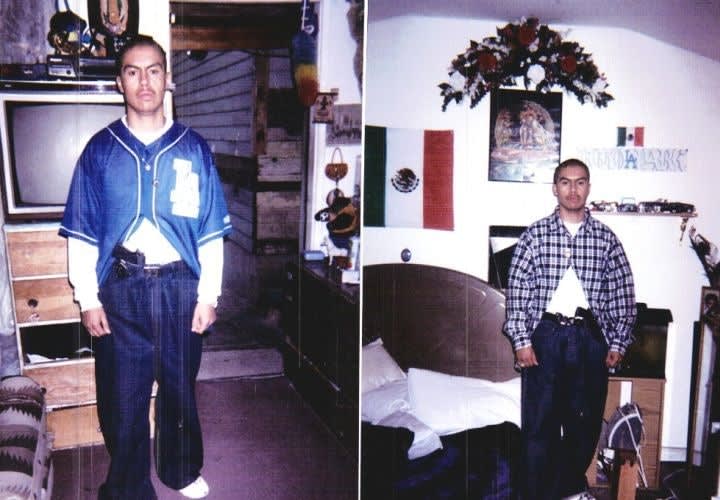Surplus Navy bell-bottom dungarees became known as "blues" or "county jeans." Surplus Army khaki pants and oversized white T-shirts were standard-issue in several Los Angeles juvenile facilities. Even in the 70s and 80s, I remember many times contacting gang members in East Los Angeles or the South Central Los Angeles area wearing clothing stenciled with "Property of the Los Angeles County Jail."
State prison-made shoes, red and blue railroad bandannas, blue jean jackets, and blue Navy surplus wool watch caps were popular prison issue items of clothing. Juvenile inmates in California often ended up at Conservation Camps and the Youth Authority Fire Camps; these items were also issued there. Military cloth belts, wool Pendleton shirts, and brown canvas "camp jackets" were worn back in the barrio or ghetto as items of pride. This counterculture self identification with a lifestyle behind bars just about guaranteed a return to this environment.
In the 1970s, Crips made their appearance in the streets of Los Angeles. In the 1960s, African-American gangsters dressed a cut above the average kid at Compton High. Black slacks, white shirts and one-inch ties, three-quarter-length trench coats with hoodlum priest collars, and stingy brimmed hats, complemented by sweaters and Italian or "French toed" shoes were commonly worn by members of the Gents, Roman Pearls, Bartenders, and Slauson Village.
But the Crips wore cheap plaid flannel shirts, baggy khaki or Dickie style pants with suspenders hanging down. This gave the sagging pants look. They wore golf caps, tennis shoes, and a walking cane or golf club to complete the Crip gangster look. This was a major step down, a ghetto look. Later gang members dropped the suspenders and cocked the baseball cap visor up, or to the left or right, or turned it backwards, in order to look different … like everybody else.
MTV and music videos featuring gangsta rap stars and their gangsta entourages strongly influenced gang members in the 1980s. Gaudy jewelry and gold capped teeth or "bling" became popular. At the same time, legitimate clothing manufacturers began producing gang-like clothing, in the hip-hop and the gangster-grunge looks. Shoes, jackets, and hats were manufactured with hidden compartments called "sweet spots" for hiding your stash. The result was that finding non-gang-like clothing for teens became difficult. I could list numerous incidents where non-gang young people became victims of gangs because they looked like rival gang members.












